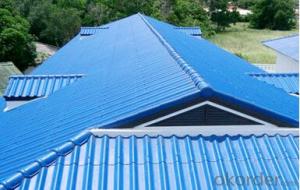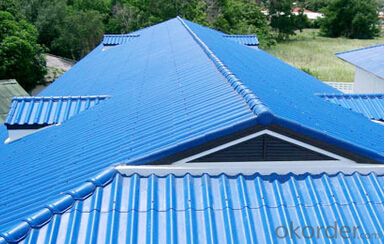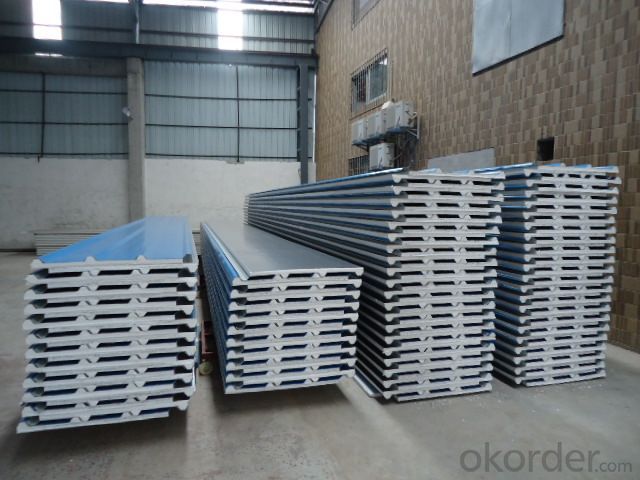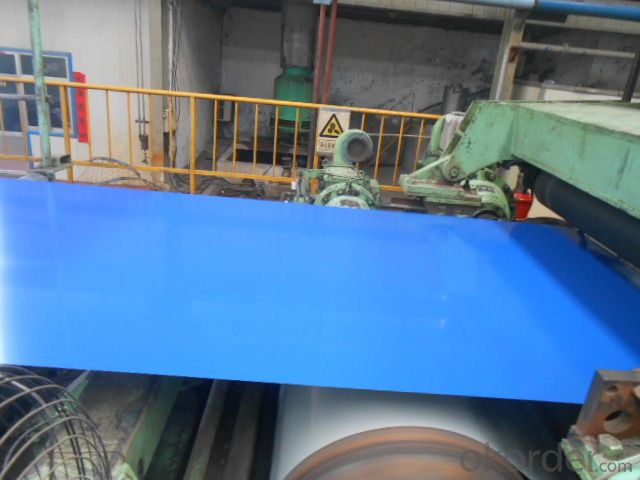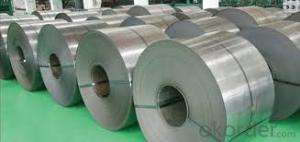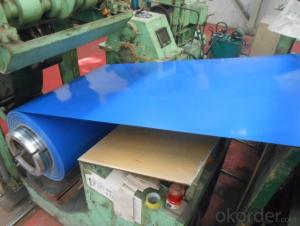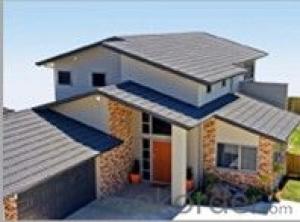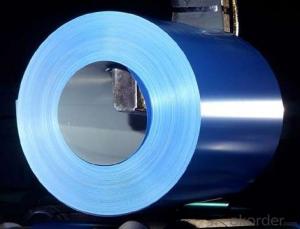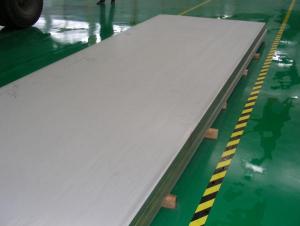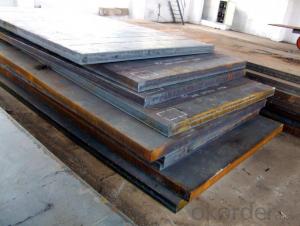Prepainted Galvanized roofing sheet
- Loading Port:
- Tianjin
- Payment Terms:
- TT OR LC
- Min Order Qty:
- -
- Supply Capability:
- 5000 m.t./month
OKorder Service Pledge
OKorder Financial Service
You Might Also Like
Pre painted Galvanized roofing sheet
1> thickness: 0.12mm - 4.5mm
2> width:762mm/914mm/1200mm
3> length:Any length
4> basic material: galvanized steel sheet, Aluminum steel sheet
5> Zinc (Al) coating: 60g/m2 - 270g/m2
6> shape: corrugated
7> mainly usage: roof.
8> color: RAL card
9> Package: standard export package or as customer's requirement
| Corrugated steel sheet | ||
| species | Galvanized corrugatsheeted steel | Prepainted galvanized corrugated steel sheet (Color coated corrugated steel sheet) |
| Surface | big spangle, small spangle, no spangle | Color coated as Ral series colors |
| thickness | 0.12mm - 4.5mm | 0.12mm - 4.5mm |
| width | 672mm - 1250mm or as customer's demand | 672mm - 1250mm or as customer's demand |
| length | 1m-12m or as customer's requirement | 1-12m or as customer's requirement |
| basic material | cold rolled steel coil | galvanized steel coil |
| Process | Cold rolled steel coil + hot galvanized + corrugated | Cold rolled steel coil + hot galvanized + color coated + corrugated |
- Q: Are the steel sheets susceptible to rusting?
- Yes, steel sheets are susceptible to rusting as steel is prone to corrosion when exposed to moisture and oxygen.
- Q: What is the hardness of the steel sheets?
- The hardness of steel sheets can vary depending on the specific grade and treatment of the steel. Steel sheets are typically measured on the Rockwell hardness scale, which measures the resistance of the material to indentation. The hardness of steel sheets can range from relatively soft to extremely hard, depending on factors such as the carbon content, alloying elements, and heat treatment processes used during manufacturing. It is important to consider the intended application and desired properties when selecting steel sheets, as the hardness can affect factors such as wear resistance, strength, and machinability.
- Q: How do you repair damaged steel sheets?
- To repair damaged steel sheets, the first step is to clean the area thoroughly, removing any dirt, rust, or debris. Then, using a grinder or sandpaper, smooth out the damaged area until the surface is even. Next, apply a suitable metal primer to the repaired area and let it dry. Finally, use a steel filler or epoxy putty to fill in any remaining gaps or imperfections. Once the filler is dry, sand it down to ensure a smooth finish, and paint the repaired area to match the surrounding steel sheets.
- Q: What kind of steel plate is Q234?
- Q235 is divided into four quality grades. They are Q235A, Q235B, Q235C, Q235D. The elements of iron and phosphorus in the steel increased in turn.
- Q: Are steel sheets resistant to seismic activities?
- Yes, steel sheets are generally resistant to seismic activities. Steel is a highly durable and flexible material that can withstand the forces exerted during earthquakes. It has excellent tensile strength and can absorb and dissipate seismic energy, making it a suitable choice for seismic-resistant construction. Additionally, steel structures can be designed and reinforced to enhance their seismic performance further.
- Q: What is the difference between a brushed and polished steel sheet?
- A brushed steel sheet and a polished steel sheet differ in terms of their surface finishes. A brushed steel sheet is characterized by a pattern of parallel lines or scratches on its surface, created using abrasive materials or tools. The purpose of brushing is to give the steel sheet a textured appearance, which helps to hide fingerprints, scratches, and wear over time. It also provides a more industrial, matte finish. On the other hand, a polished steel sheet has a smooth and glossy surface. Polishing involves using polishing compounds or abrasive materials to remove imperfections, scratches, and oxidation from the steel surface. This process creates a reflective and mirror-like finish, enhancing the aesthetic appeal of the steel sheet. Polished steel sheets are commonly used in applications where appearance and visual appeal are important, such as architectural design, interior decoration, and high-end products. In summary, the main difference between a brushed and polished steel sheet lies in their surface finishes. Brushed steel sheets have a textured, matte appearance, while polished steel sheets have a smooth and glossy, mirror-like finish. The choice between the two depends on the desired aesthetic, functional requirements, and the intended application of the steel sheet.
- Q: Are there any restrictions on the thickness of the steel plate, such as the minimum thickness of the steel plate?
- The information of the building is incomplete and can not be determined. The welding technical parameters will affect the welding method, welding current, welding voltage, welding environment and specifications
- Q: What's the difference between steel plate 20 and Q235 steel plate?
- 20 is a high-quality carbon structural steel, Q235 is carbon structural steel, and steel 20 is higher than Q235.According to the application of the situation, the two kinds of steel generally in the load is not large, the requirements are not high can be exchanged
- Q: What's the difference between single rolling steel sheet and continuous rolling steel plate?
- Continuous plate refers to the hot rolling and cold rolling steel plate, rolling steel in rolling end is rolling roll, after Kaiping became a continuous plate after segmentation, due to the presence of curling and Kaiping rolling steel process, usually there are some residual stress, usually thin (less than 25mm) is narrow (usually below 2100mm).
- Q: How do steel sheets perform in extreme weather conditions?
- Steel sheets perform well in extreme weather conditions due to their high strength and durability. They are resistant to corrosion, fire, and can withstand intense winds, heavy rain, and extreme temperatures. Additionally, steel sheets have excellent structural stability, making them suitable for use in various applications, such as roofing, cladding, and construction, even in harsh weather environments.
Send your message to us
Prepainted Galvanized roofing sheet
- Loading Port:
- Tianjin
- Payment Terms:
- TT OR LC
- Min Order Qty:
- -
- Supply Capability:
- 5000 m.t./month
OKorder Service Pledge
OKorder Financial Service
Similar products
Hot products
Hot Searches
Related keywords
